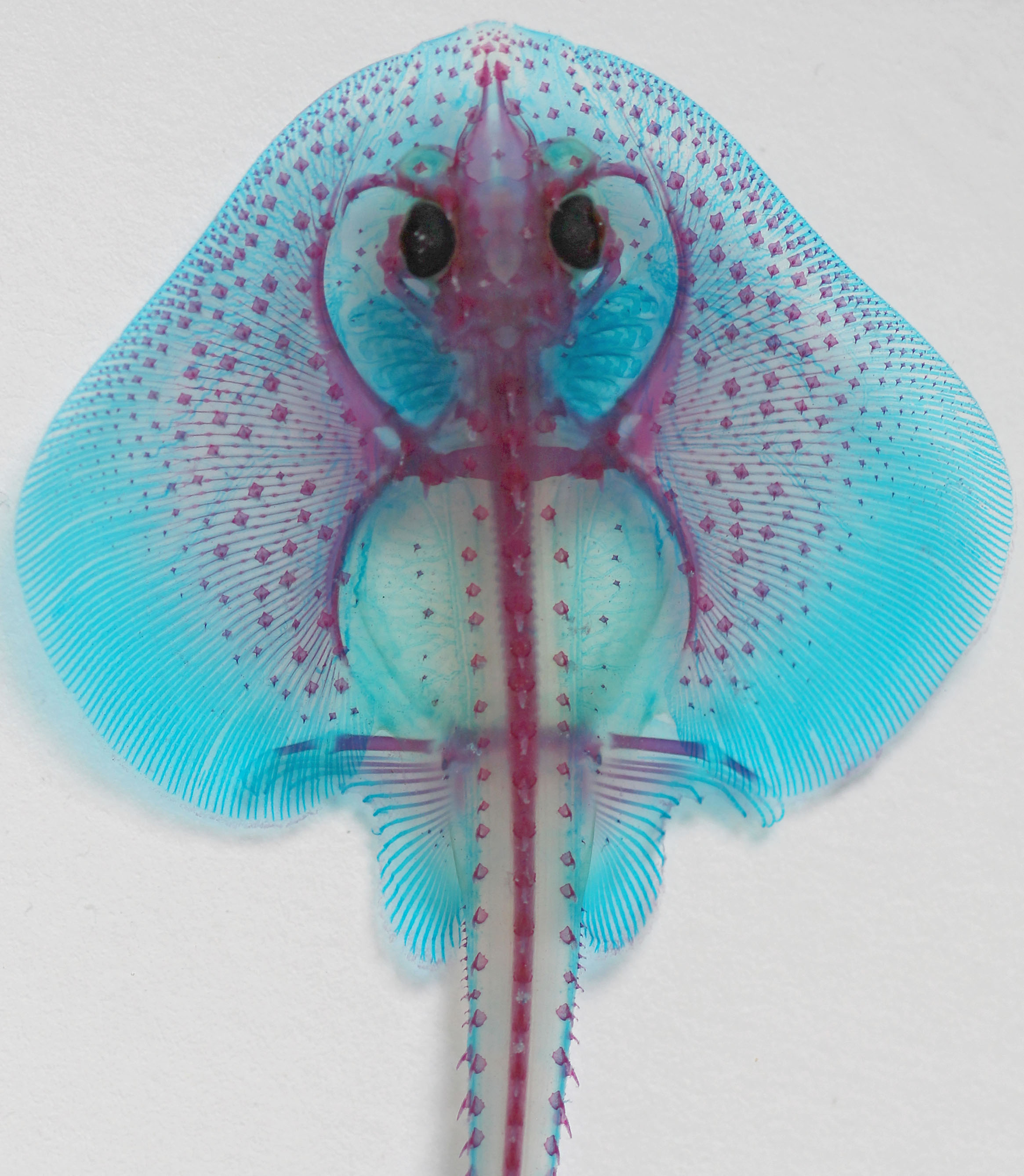How Did Paired Human Limbs Evolve? Whitman Center Study Targets Role of Gill Arches in Fish

WOODS HOLE, Mass. – Sharks, skates, and rays are oddities among the fish: They have appendages growing out of the gill arches, small cradles of bones that support the gills. This anatomical peculiarity has led to the proposal that the paired limbs of humans, and before that the paired fins of fish, evolved from the transformation of gill arches in early fish.
Genetic evidence for this theory is offered in a new study led by Andrew Gillis, a Royal Society University Research Fellow at the University of Cambridge, U.K., and a Whitman Center scientist at the Marine Biological Laboratory (MBL) in Woods Hole, Mass.
The study, published this week in Development, demonstrates striking similarities in the genetic mechanism used to pattern gill-arch appendages (called branchial rays) and fins/limbs.
Studying embryos of the little skate, Gillis focused on the gene Sonic hedgehog, which produces a signaling protein whose function is well understood in the mammalian limb. Remarkably, he found that Sonic hedgehog’s role in branchial rays closely parallels its role in the limb: It sets up the axis of development and, later, maintains growth of the limb skeleton.
“The shared role of Sonic hedgehog in patterning branchial rays and limbs may be due to a deep evolutionary relationship between the two,” Gillis says, “or it may simply be that two unrelated appendages independently use the same gene for the same function.” Ongoing studies comparing the function of other genes during branchial ray and fin/limb development will help to resolve this. Gillis will continue his research at the MBL this summer using skates collected and supplied by the Marine Resources Department.
“Branchial rays will figure prominently in the story of the evolutionary origin of vertebrate animal appendages, either by shedding light on the evolutionary antecedent of paired fins/limbs, or by teaching us about the genetic mechanisms that animals can use to invent new appendages,” Gillis says.
Citation:
Gillis, J. Andrew and Brian K. Hall (2016) A shared role for sonic hedgehog signaling in patterning chondrichthyan gill arch appendages and tetrapod limbs. Development, doi:10.1242/dev.133884.
Video:
Selected embryonic stages of the little skate, ranging from blastodisc (i.e. just a few cells organized into a disc on top of the yolk) through to hatching. Credit: J. Andrew Gills lab
—###—
The Marine Biological Laboratory (MBL) is dedicated to scientific discovery – exploring fundamental biology, understanding marine biodiversity and the environment, and informing the human condition through research and education. Founded in Woods Hole, Massachusetts in 1888, the MBL is a private, nonprofit institution and an affiliate of the University of Chicago.
